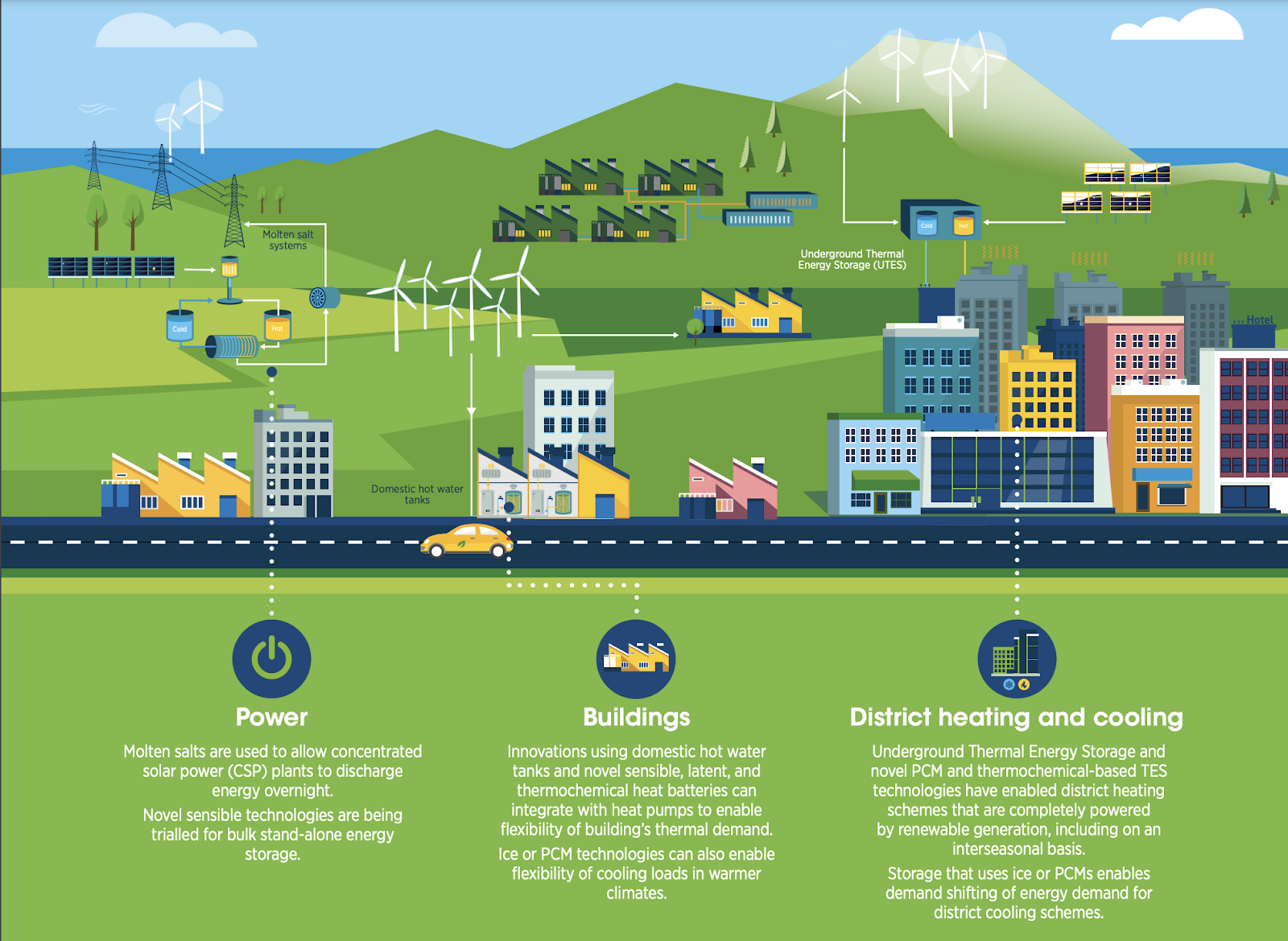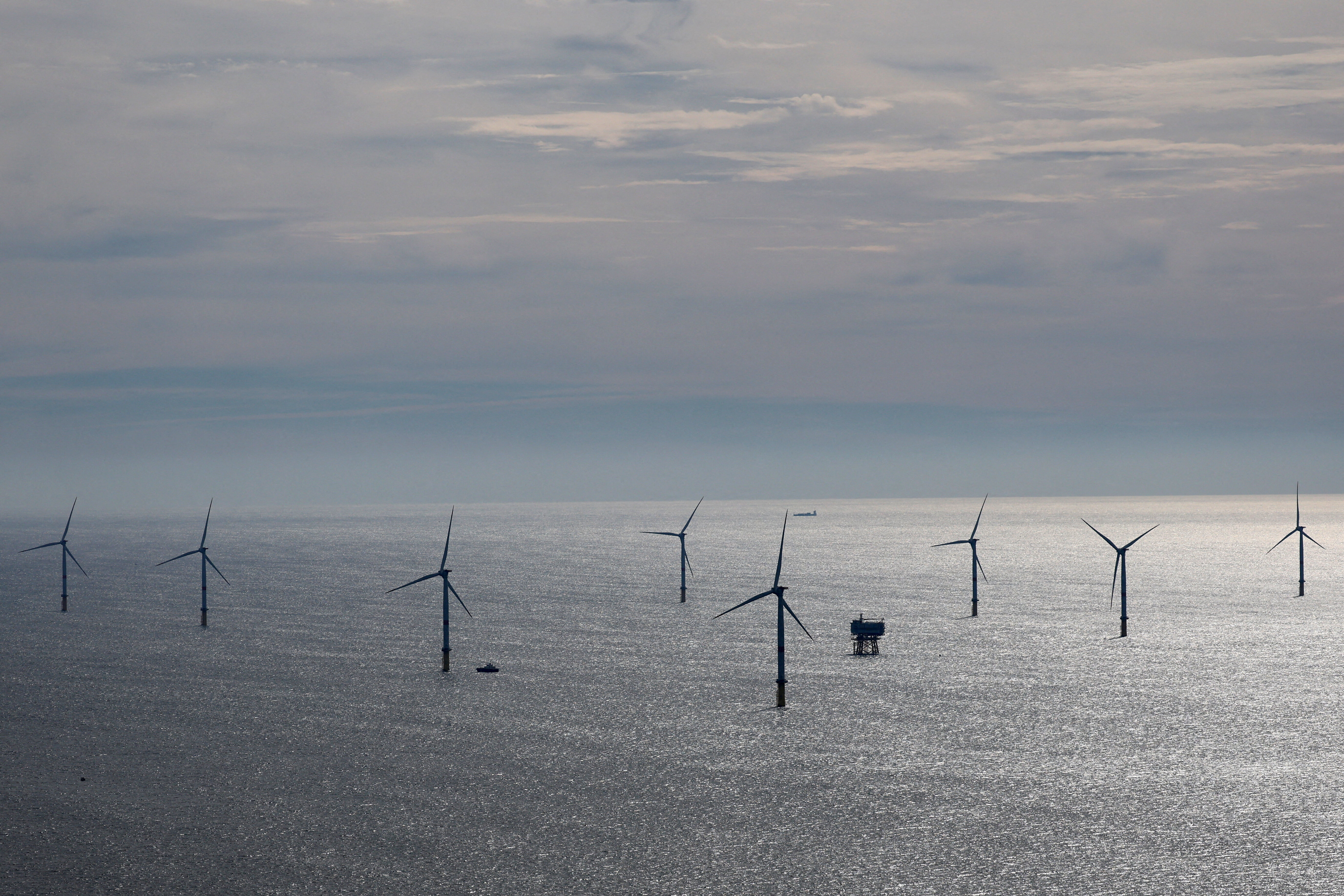How can we store renewable energy? 4 technologies that can help

Hydropower is expected to remain the world’s largest source of renewable electricity generation.
Image: REUTERS
Stay up to date:
Energy Transition
This article was updated in November 2024.
- Europe and China are leading the installation of new pumped storage capacity – fuelled by the motion of water.
- Batteries are now being built at grid-scale in countries including the US, Australia and Germany.
- Thermal energy storage is predicted to triple in size by 2030.
- Mechanical energy storage harnesses motion or gravity to store electricity.
If the sun isn’t shining or the wind isn’t blowing, how do we access power from renewable sources?
The key is to store energy produced when renewable generation capacity is high, so we can use it later when we need it.
With the world’s renewable energy capacity reaching record levels, four storage technologies are fundamental to smoothing out peaks and dips in energy demand without resorting to fossil fuels.
1. Pumped hydro
Pumped hydro involves pumping water uphill at times of low energy demand. The water is stored in a reservoir and, in periods of high demand, released through turbines to create electricity.
Hydropower – including pumped storage – is expected to remain the world’s largest source of renewable electricity generation into the 2030s, according to the International Energy Agency (IEA). It uses the motion of water to generate electricity and plays a "critical" role, the IEA says, in decarbonizing the power system. It is also key to plugging gaps in energy demand.
While hydro is expected to be eventually overtaken by wind and solar, it will continue to play this important role as a dispatchable power source, the agency says.
2. Batteries
Batteries have been around since the 1800s and convert stored chemical energy into electrical energy.
Advances in technology and falling prices mean grid-scale battery facilities that can store increasingly large amounts of energy are enjoying record growth. The world’s largest battery energy storage systems include the Moss Landing Energy Storage Facility in California, US, which currently has an energy capacity of 3,000 megawatt hours (MWh) but could eventually host 6 gigawatt hours (GWh) of battery storage.
The UK's largest battery energy storage system recently went live, with a 200MWh capacity – enough to power about 30,000 homes a day.
Other countries investing in utility-scale battery energy systems include Australia, Germany, Japan, Lithuania and Chile
3. Thermal energy storage
Thermal energy storage is used particularly in buildings and industrial processes. It involves storing excess energy – typically surplus energy from renewable sources or waste heat – to be used later for heating, cooling or power generation.
Liquids such as water, or solid materials such as sand or rocks, can store thermal energy. Chemical reactions or changes in materials can also be used to store and release thermal energy.
Water tanks in buildings are simple examples of thermal energy storage systems. On a much grander scale, Finnish energy company Vantaa is building what it says will be the world's largest thermal energy storage facility. This involves digging three caverns – collectively about the size of 440 Olympic swimming pools – 100 metres underground that will store heat and supply a district heating network whenever needed. Vantaa says the site could heat a medium-sized city for a year.
Underground thermal energy storage projects such as this create the possibility of storing waste heat from data centres, cooling processes and waste-to-energy sites below ground – and could have a big impact as the energy transition advances.
The global market for thermal energy storage could triple in size by 2030, according to the International Renewable Energy Agency – from 234GWh of installed capacity in 2019 to more than 800GWh.

4. Mechanical energy storage
Mechanical energy storage harnesses motion or gravity to store electricity.
For example, a flywheel is a rotating mechanical device used to store rotational energy that can be called up instantaneously.
“Flywheel technology has many beneficial properties that enable us to improve our current electric grid,” says the Energy Storage Association, the US national trade association for energy storage.
Other mechanical systems include compressed air energy storage, which has been used since the 1870s to deliver on-demand energy for cities and industries. The process involves storing pressurized air or gas and then heating and expanding it in a turbine to generate power when needed.
What's the World Economic Forum doing about the transition to clean energy?
Energy storage was a focus at this year's UN Climate Change Conference, COP29, as delegates looked to agree on ways to support the previous COP's target of tripling renewables by 2030.
The COP29 'grids and storage' pledge includes a commitment to support the transition by increasing power system storage capacity six-fold by 2030.
Accept our marketing cookies to access this content.
These cookies are currently disabled in your browser.
Don't miss any update on this topic
Create a free account and access your personalized content collection with our latest publications and analyses.
License and Republishing
World Economic Forum articles may be republished in accordance with the Creative Commons Attribution-NonCommercial-NoDerivatives 4.0 International Public License, and in accordance with our Terms of Use.
The views expressed in this article are those of the author alone and not the World Economic Forum.
Related topics:
Forum Stories newsletter
Bringing you weekly curated insights and analysis on the global issues that matter.
More on Energy TransitionSee all
Andres Rebolledo Smitmans, David Rabley and Espen Mehlum
November 14, 2025
Rishika Daryanani, Daniel Waring and Tarini Fernando
November 14, 2025
Harsh Vijay Singh and Attilio Di Battista
November 14, 2025
Min HU
November 13, 2025
Caroline Narich, Maria De Miguel, Jessika E. Trancik and Christine Gschwendtner
November 12, 2025







